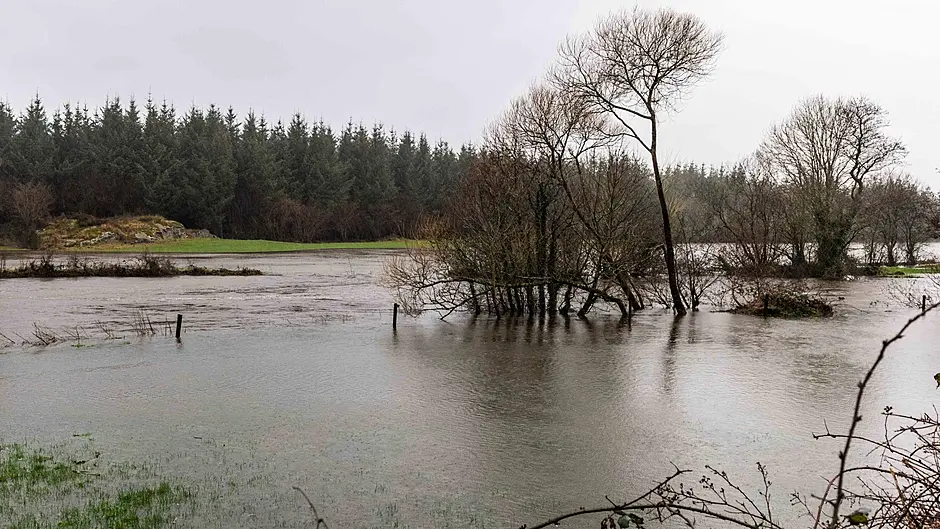Meteorologist Vincent O’Shea says that while West Cork seems to have been very damp for the past few months, maybe we should count our blessings.
WHILE much of the country was recently covered in snow in early January, West Cork was damp, yet mild – and we should be thankful for that.
We really don’t seem to realise how lucky we are, down here in the beautiful south west, with so few snowstorms in this microclimate corridor of West Cork and south Kerry.
Given the narrow margins of temperatures in Ireland when they do occur, it makes for very messy situations with mixes of rain, sleet and snow. Slush is ever present, and thawing sometimes produces spot flooding.
Considering the time of year when many suffer Seasonal Affective Disorder (SAD), it might come as a surprise that the closing months of 2024 (October, November and December) were all very mild, benign and drier than normal.
Sherkin Island’s weather station had the highest average monthly temperature in the country for each of those three months.
The Gulf Stream splits around Mizen Head, with most of it directed north towards Scotland and Norway, and a lesser component towards the Celtic Sea, on towards the Irish Sea and Britain.
We are effectively its first port of call.
The north Atlantic jet stream is a closely-related global scale wind flow that predominates at our latitudes in Ireland.
Admittedly, the earlier part of January 2025 was characterised by many dank, dull and drizzly days.
The waters off our coast here in the south west are deep, well mixed and relatively warm (about 12 degrees Celsius). This makes it a huge heat reservoir.
The amount of water vapours the atmosphere can retain is temperature-dependent.
We had very moist airflows from the south (originating in the sub tropics) traversing that sea surface and subsequently becoming saturated around these coasts.
We refer to this as ‘high dewpoint air’ and is common during the winter months, when it translates to misty, overcast weather with still only a modicum of rainfall.
That occurred during the early weeks of January. It’s termed ‘advection fog’ and persisted densely around Baltimore harbour and its nearby islands for days earlier this month.
Putting annual rainfall totals in context – Dublin is the driest with circa 750 mm, West Cork’s annual rainfall is circa 1100 mm, while Kerry’s long-established Valentia station gets circa 1400 mm.
However, upland areas of west Munster and Connacht, including Connemara, get upwards of 2200 mm.
Clearly West Cork is not one of the wettest areas – and in fact is one of the driest and sunniest places during the summer months. The unique flora and fauna of Roaringwater Bay’s islands is testament to the influence of the gulf stream.
Climate change is undoubtedly with us. Warmer seas mean a warmer atmosphere, with notably bigger water vapour capacity.
It means more energetic systems, and hence more extreme weather events to come.
Our climate is owned by no one yet needed by everyone. The best time to act on Climate Change was long ago but the next best time to act is now.
Fast forward to Storm Eowyn on January 23rd, when explosive cyclogenesis occurred in a strengthening mid Atlantic jet stream.
Herminia, named by the Spanish Met office followed, bringing yet more rain and gales.
World climate change scientists say a continuing warming atmosphere implies more energy and capacity for water vapour and hence more severe rainstorms – especially during winter seasons.
However, several supercomputer model simulations predict warmer and sunnier summers for us here in the south of Ireland.
Let’s not lose sight of the terrifying California infernos, where spontaneous combustion arose out of nowhere.
World sporting governing bodies are reconsidering if LA is even a suitable venue for future events.
Nowadays we seem to be overtaken by apps, each more confusing than the next.
My advice is to get used to using ‘ECMWF – charts’ provided by the European Centre for Medium-Range Weather Forecasts.
Pick the surface pressure and rainfall map.
It can be scrolled through at six-hour intervals to 240 hours in advance. A very useful tool, and increasingly accurate, often beyond seven days.
Many apps are gimmicks with fancy post processing to fit in with social media.
The weather has thankfully quietened down in recent days.
Let’s cherish the time, moment and the great part of the world we live in, and contrary to whatever anyone thinks – I still believe we have the best weather!
• Vincent O’Shea MSc MBA is a West Cork-based senior meteorologist








